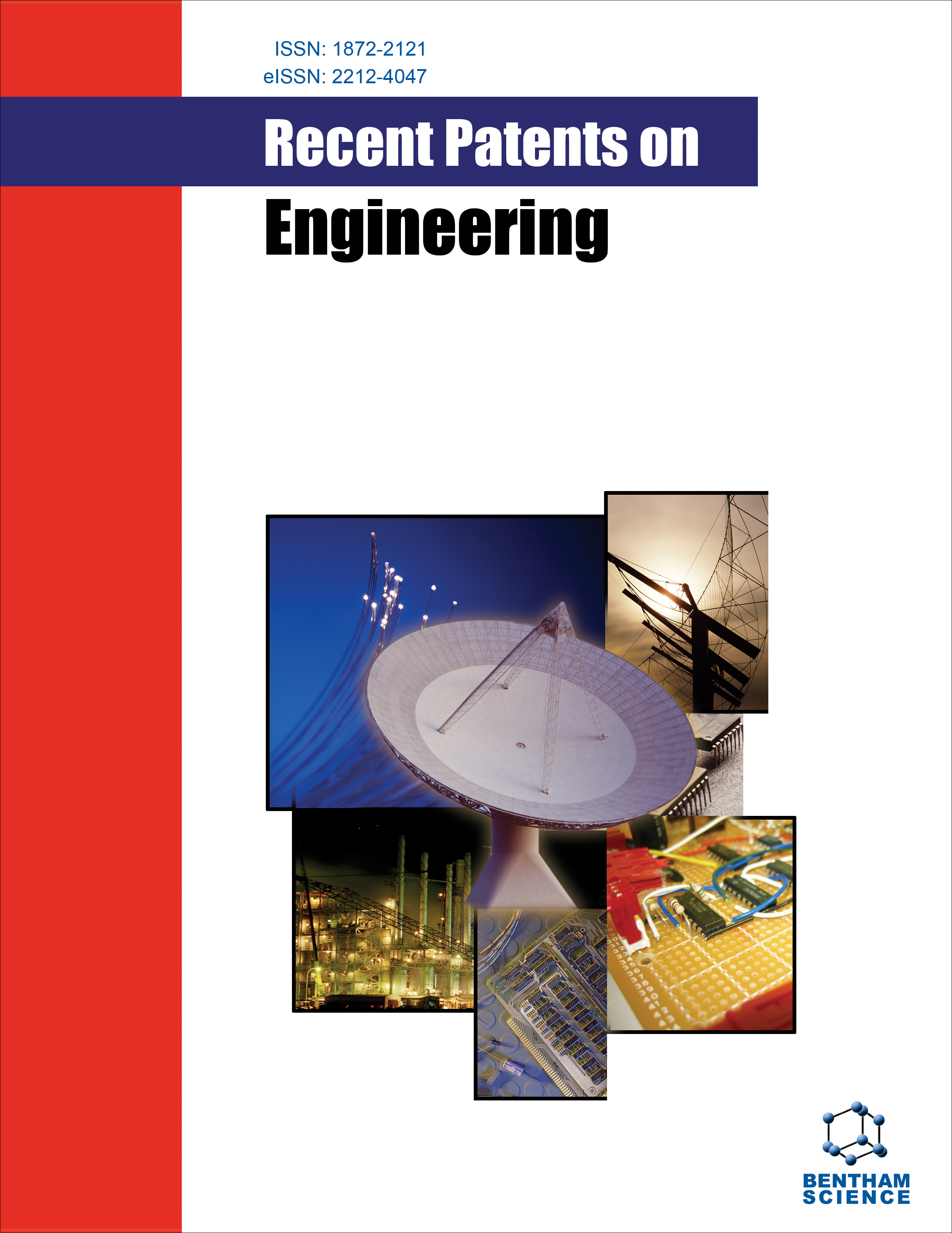- Home
- A-Z Publications
- Recent Patents on Engineering
- Previous Issues
- Volume 16, Issue 2, 2022
Recent Patents on Engineering - Volume 16, Issue 2, 2022
Volume 16, Issue 2, 2022
-
-
A Blockchain based Fund Management Scheme for Financial Transactions in NGOs
More LessAuthors: Megha jain, Suresh Kaswan and Dhiraj PandeyBackground: In the world of the latest technologies, the blockchain is one of the popular techniques for stopping fraudulent activities. Non-Government Organization (NGO) is increasingly being used to support all the needy people across the globe to shape the world’s responsibility towards society for sustainable development. The existing method of donating money and its monitoring is facing a major corruption pr Read More
-
-
-
A Review of Clustering Algorithms: Comparison of DBSCAN and K-mean with Oversampling and t-SNE
More LessAuthors: Eshan Bajal, Vipin Katara, Madhulika Bhatia and Madhurima HoodaThe two most widely used and easily implementable algorithm for clustering and classification- based analysis of data in the unsupervised learning domain are Density-Based Spatial Clustering of Applications with Noise and K-mean cluster analysis. These two techniques can handle most cases effectively when the data has a lot of randomness with no clear set to use as a parameter as in the case of linear or logistic regression a Read More
-
-
-
A Sentiment Analysis Based Approach for Customer Segmentation
More LessAuthors: Anisha Bhatnagar and Madhulika BhatiaBackground: Customer Segmentation is the process of dividing customers into groups based on some demographic factors in order to get an idea of the targeted audience for a product and to best market said product. Objective: Sentiment Analysis on customer reviews is one way that this process can be enhanced to get not just demographic information but subjective information and preferences as well. Methods: In this s Read More
-
-
-
Depression Discovery in Covid-19 Communities Using Deep Learning
More LessAuthors: Sourabh Sharma, Saloni Yadav and Vaishali KalraBackgroung: Seemingly, in the contemporary era, data is the new currency. Facing the exponential explosion of data through its various online sources, there arises a need for the industry to tap into this source. The art of ascribing sentiment to a piece of text is Sentiment Analysis making it relevant to a wide array of fields. The world has witnessed assortments of a wide family of coronaviruses, 229E and NL63 being the alph Read More
-
-
-
Breast Cancer Segmentation Recognition Using Explored DCT-DWT based Compression
More LessAuthors: Navnish Goel, Akhilendra Yadav and Brij M. SinghBackground and Objective: Breast cancer is a leading cause of death worldwide, and its early detection is usually performed with low quality clinical images. Due to unpredictable structure of breast and characterization of cancer, disease in early stages is yet a difficult issue for specialists and analysts. The accurate identification of breast cancer is an important step in its early stage to avoid drastic death rate. With the advanc Read More
-
-
-
Hiding Capacity and Audio Steganography Model Based on LSB in Temporal Domain
More LessAuthors: Anju Gera and Vaibhav VyasBackground: Researchers for data hiding using the various encrypting techniques to improve the security of transmission of confidential information through an unsecured channel have been carried out. Methods: In this paper, a new higher recognition Least Significant Bit (LSB) audio data concealment is suggested in this framework. This technique is used to embed the hidden audio into cover audio of the same size. R Read More
-
-
-
A Review on Identification Methods of Road Friction Coefficient
More LessAuthors: Gengxin Qi, Xiaobin Fan and Hao LiBackground: The development of the tire/road friction coefficient measurement and estimation system has far-reaching significance for the active electronic control safety system of automobiles and is one of the core technologies for autonomous driving in the future. Objective: Estimating the road friction coefficient accurately and in real-time has become prominent in research. Researchers have used different tools and propo Read More
-
-
-
DDoS Attack Detection in Software Defined Networks by Various Metrics
More LessAuthors: Noor R. Saadallah, Sahar A. A. Al-Talib and Fahad Layth MalallahBackground: Software-Defined Networks (SDNs) are a new architectural approach to smart centralized control networks that were introduced alongside Open Flow in 2011. SDNs are programmed using software applications that help operators manage the network in a fully consistent and comprehensive way. Centralization in these networks is considered a weakness, especially if it is accessed by a Distributed Denial of Ser Read More
-
-
-
The Impact of the Detector on the Performances of a Multi-Person Tracking System
More LessAuthors: Djalal Djarah, Abdallah Meraoumia and Mohamed L. LouazeneBackground: Pedestrian detection and tracking are an important area of study in realworld applications, such as mobile robots, human-computer interaction, video surveillance, pedestrian protection systems, etc. As a result, it has attracted the interest of the scientific community. Objective: Certainly, tracking people is critical for numerous utility areas which cover unusual situations detection, like vicinity evaluation, and som Read More
-
Volumes & issues
-
Volume 19 (2025)
-
Volume 18 (2024)
-
Volume 17 (2023)
-
Volume 16 (2022)
-
Volume 15 (2021)
-
Volume 14 (2020)
-
Volume 13 (2019)
-
Volume 12 (2018)
-
Volume 11 (2017)
-
Volume 10 (2016)
-
Volume 9 (2015)
-
Volume 8 (2014)
-
Volume 7 (2013)
-
Volume 6 (2012)
-
Volume 5 (2011)
-
Volume 4 (2010)
-
Volume 3 (2009)
-
Volume 2 (2008)
-
Volume 1 (2007)
Most Read This Month
Article
content/journals/eng
Journal
10
5
false
en


